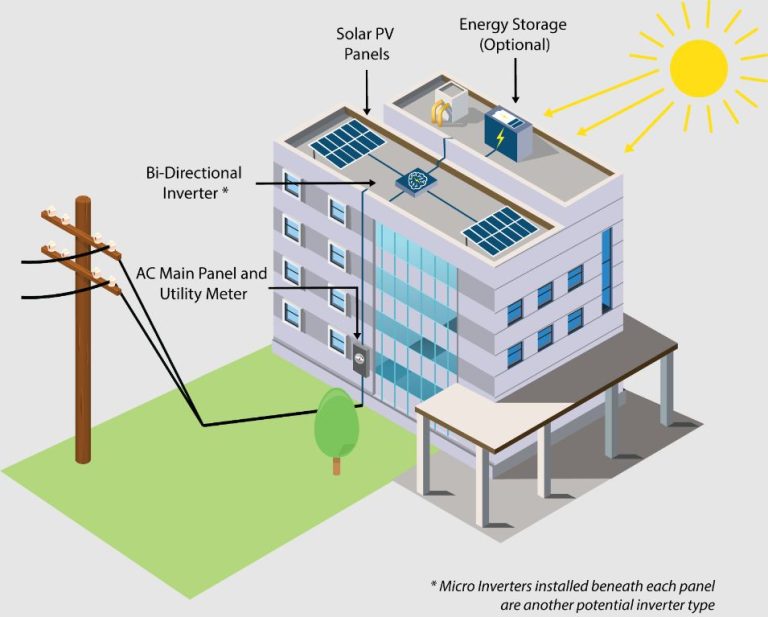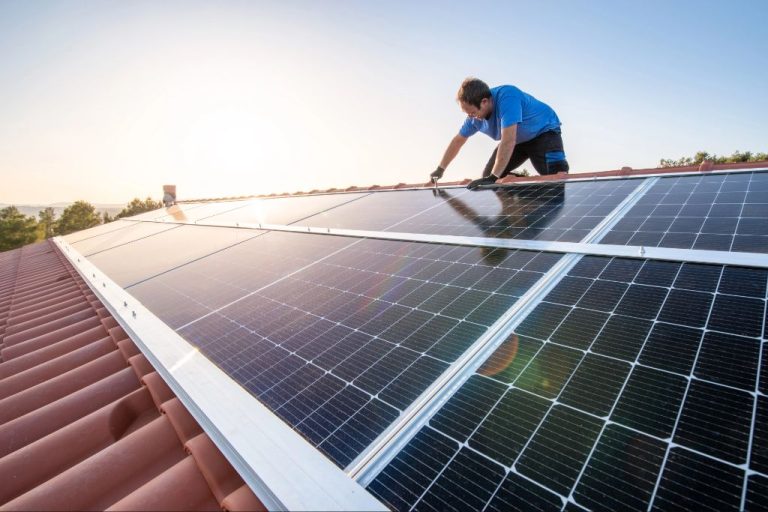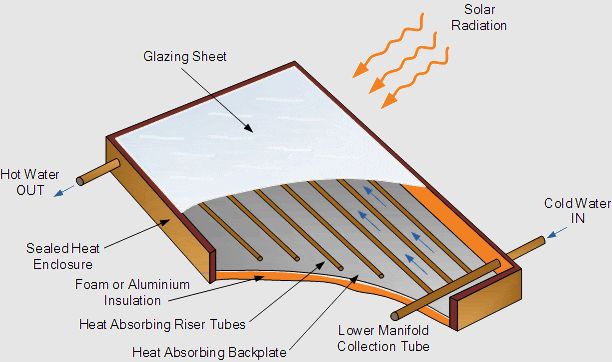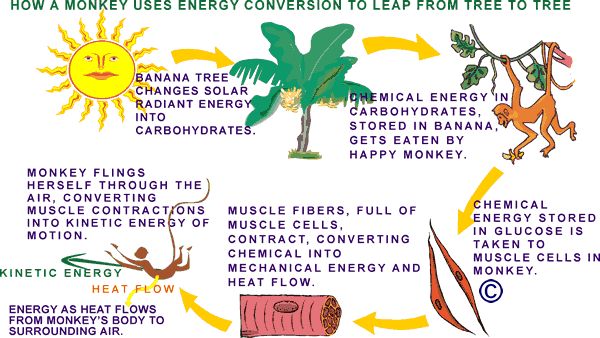Why Is Solar Energy Not 100% Efficient?
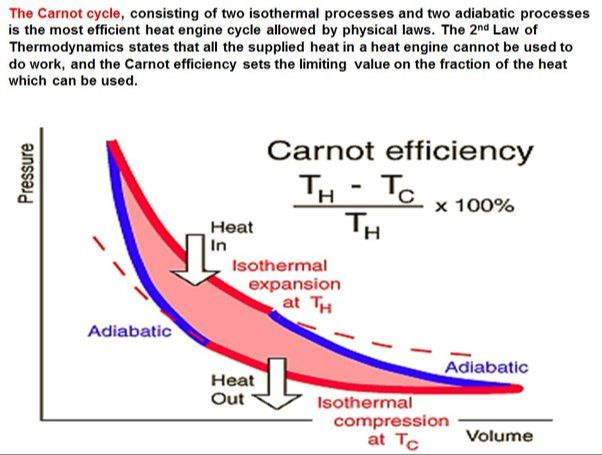
Solar energy is a renewable and clean energy source that harnesses the sun’s rays to generate electricity or heat. It has become an increasingly important part of the global energy mix, providing a sustainable alternative to fossil fuels. However, while solar technology has improved dramatically in efficiency over the past decades, it faces fundamental limits that prevent it from achieving 100% efficiency.
There are theoretical limits to how much of the sun’s energy can be converted into usable electricity. The well-known Shockley-Queisser limit states that the maximum possible efficiency for a standard solar cell made of a single absorber layer, such as silicon, is around 33%. This thermodynamic limit arises from unavoidable energy losses during the light absorption and charge carrier generation processes.
Additionally, there are practical factors that cause real-world solar cells to fall short of those theoretical efficiency limits. This includes reflection of light off the cell’s surface, resistive losses, charge carrier recombination, and spectrum mismatch between sunlight’s spectrum and the cell’s absorption profile. These non-ideal and fundamental aspects of the underlying physics mean that reaching 100% solar efficiency is currently impossible.
Solar Spectrum Mismatch
Solar cells are designed to absorb certain wavelengths of light that match their bandgap energy level in order to generate electricity. However, the solar spectrum contains a broad range of wavelengths and energies. Not all of these photons can be absorbed and converted to electricity by a solar cell [1]. This mismatch between the solar spectrum and a cell’s absorption spectrum leads to efficiency losses.
Different wavelengths of sunlight contain different amounts of energy. Higher energy photons with shorter wavelengths are blue and violet, while lower energy photons with longer wavelengths are red and infrared. Solar cells are typically engineered to absorb higher energy visible and ultraviolet light. However, much of the solar spectrum consists of lower energy infrared photons. These long wavelength photons pass through the solar cell without being absorbed since their energy is below the cell’s bandgap. This mismatch between the broad solar spectrum and a cell’s narrow absorption range means a significant portion of incoming sunlight is wasted [2].
In addition, manufacturing defects can further limit a solar cell’s absorption spectrum. Not absorbing part of the spectrum leads to reduced electrical current and lower efficiency compared to a cell’s theoretical maximum. Solar spectrum mismatch with a cell’s absorption profile is a key reason commercial solar panels are not 100% efficient.
Thermodynamic Limitations
Solar cells have a thermodynamic efficiency limit related to the bandgap energy of the absorber materials. Photons with energy below the bandgap are not absorbed and their energy is wasted. Photons with energy above the bandgap excite electrons to higher energy states, but the excess energy above the bandgap is quickly lost as heat. This heat dissipation process is an unavoidable loss mechanism that limits the voltage and efficiency of solar cells.
For conventional silicon solar cells, the bandgap is around 1.1 electronvolts (eV). Photons below this energy are transmitted through the cell. Photons above 1.1 eV can be absorbed, but a significant portion of that energy is lost as heat during thermalization of the excited electrons. This sets a theoretical maximum efficiency of around 33% for silicon solar cells under unconcentrated sunlight. The thermodynamic limit is one fundamental reason why solar panels cannot achieve 100% efficiency.
Shockley-Queisser Limit
The Shockley-Queisser limit, also known as the detailed balance limit, refers to the maximum theoretical efficiency of a solar cell using a single p-n junction. This limit was calculated in 1961 by William Shockley and Hans Queisser. According to this limit, the maximum efficiency of a conventional silicon solar cell under unconcentrated sunlight is approximately 33.7%.
This limit arises due to unavoidable photon energy losses during the process of converting sunlight into electricity. Photons with energy below the bandgap are not absorbed and their energy is wasted. Photons with energy above the bandgap can be absorbed, but the excess energy is lost as heat during thermalization of the excited electron. Additionally, some absorbed photons are lost due to radiative recombination, where an electron recombines with a hole and emits a lower energy photon. This radiative recombination causes further energy losses.
Due to these fundamental photon energy losses, the Shockley-Queisser limit provides a theoretical maximum efficiency for a single junction solar cell. Exceeding this limit requires advanced solar cell designs such as multi-junction cells that can absorb different parts of the solar spectrum. Nonetheless, the detailed balance limit remains an important concept for understanding the physical constraints on solar cell efficiency.
Photon Reflection
Solar panels can lose some of their efficiency due to photon reflection off the solar cell surface. When photons are reflected, that solar energy is lost and cannot be converted into electricity. According to research, around 4-40% of sunlight can be reflected off the surface of solar panels depending on the material composition [1].
To reduce reflection losses, solar panels utilize anti-reflective coatings that allow more light to pass into the solar cell. However, these coatings cannot completely eliminate reflection. There will always be some photon reflection resulting in efficiency losses [2]. Engineers continue researching new anti-reflective materials and surface textures to further minimize the amount of reflected photons. But reflection will likely remain one of the main factors limiting the efficiency of solar panels.
Resistive Losses
Resistance in the materials of solar cells causes power dissipation and energy loss. As current flows through the semiconductor material and metallic contacts, it encounters resistance that converts some of the electrical energy into waste heat (Resistive Energy Losses, 2018).
The metal gridlines, busbars, and contacts used to collect current from a solar cell all contribute series resistance. The semiconducting material itself also has inherent resistance that contributes to losses. Minimizing these parasitic resistances through improved materials and optimized design is an important way to increase solar cell efficiency (Wikipedia, 2022).
Recombination Losses
Recombination losses occur when electron-hole pairs recombine before being collected by the solar cell contacts. Recombination can occur at defects and surfaces within the solar cell. When carriers recombine, they essentially disappear before being collected, reducing the number of collected carriers and thus reducing the cell’s efficiency. As explained by Rebecca Saive et al., “Recombination of charge carriers prior to extraction is detrimental to photovoltaic conversion efficiency.”[1] Carrier recombination is an inevitable loss mechanism in solar cells. However, surface passivation and material quality improvements can help suppress interface recombination and improve efficiency.
Non-Absorption
One factor limiting solar cell efficiency is the non-absorption of photons with energies below the solar cell’s bandgap energy (Eg). Photons with energies lower than the bandgap will pass through the solar cell without being absorbed and converted into electricity [1]. This occurs because semiconductors like silicon are transparent to longer wavelength, lower energy light. Long wavelength photons do not have enough energy to excite electrons across the bandgap into the conduction band, resulting in transmission losses. Thin solar cells in particular allow a significant fraction of long wavelength light to pass through unabsorbed. Increasing the thickness of the absorber layer can help absorb more long wavelength light, but also increases material costs.
Conclusion
In summary, there are several key factors that limit the efficiency of solar cells:
The solar spectrum mismatch means solar cells can’t absorb all wavelengths of light efficiently. Thermodynamic limitations cap the maximum theoretical efficiency around 33% for single junction cells. The Shockley-Queisser limit arises from the properties of semiconductors, limiting single junction cells to around 33%. Photon reflection off the cell’s surface accounts for further losses. Resistive losses occur due to resistance in the semiconductor material. Recombination losses happen when electrons and holes recombine before being extracted. And some light is simply not absorbed by the cell.
The highest efficiency demonstrated so far is 47.6% for a multi-junction concentrator solar cell as of May 2022 (Wikipedia). The record for a single junction cell stands at 39.5%, achieved in 2022 by NREL (NREL). While 100% efficiency is not physically possible, ongoing research aims to push closer to the theoretical limits, and efficiencies will continue rising in the future.
References
Sources used for this article include textbooks on photovoltaics such as Solar Cells: Materials, Manufacture and Operation by Augustin McEvoy, Handbook of Photovoltaic Science and Engineering edited by Antonio Luque and Steven Hegedus, and Solar Energy: The Physics and Engineering of Photovoltaic Conversion, Technologies and Systems by Olindo Isabella, Renato Zilles, and Kai-Olaf Hauer. Journal articles from Solar Energy Materials and Solar Cells, Progress in Photovoltaics Research and Applications, IEEE Journal of Photovoltaics, and other peer-reviewed solar PV publications were also utilized. Online resources such as the National Renewable Energy Laboratory (NREL) and Fraunhofer Institute for Solar Energy Systems ISE provided technical reports and data on solar cell efficiency limits and real-world performance.

